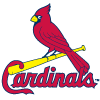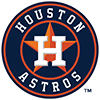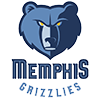The trade deadline arrives early this season -- 3:00 PM EST on Thursday, February 7, to be exact.
The trade deadline is one of the most important dates on the fantasy basketball calendar. Players changing teams means new rotations, new waiver wire prospects, and sharp changes in fantasy value. The deadline also signals the beginning of buyout season, when non-contending teams give away their remaining, expiring veterans, and, for fantasy purposes, a buyout is effectively the same as a trade.
Over the past few seasons, I've written a few Numbers Games about the trade deadline, and we've learned some useful lessons about how to project players' values after a trade. With this year's deadline closing in, I thought it might be helpful to recap some of those lessons, and use them to highlight players whose values could rise or fall following relocation.
What is predictable when a player changes teams?
If we want to understand the value of a player on the move – whether by trade, buyout, or free agency – we first must know: Are a player's stats the product of his own skills, or the product of his team?
I first examined this question here, looking at how players' stats changed when they saw at least 100 minutes for multiple teams over a single season. By focusing on players who saw minutes for two teams in one season, we could do a reasonably good job of making sure the dataset focused on comparing stats without changes in age or skill level, and minimal changes to physical and mental health.
Unsurprisingly, the findings were mixed. Some stats were highly predictable, while others were highly variable. This tells us that some stats reflect the ability of a player, while others are very situation-dependent.
Here is a summary of what we found (all stats refer to a player's per-possession production):
- Assists are the most consistent, regardless of team setting; players with high assists numbers are also more predictable across the board than low volume assisters.
- Rebounds are highly consistent, regardless of team setting; this is especially true of offensive rebounds; the more minutes someone plays, the more predictive his rebounding numbers.
- Steals are very consistent among high-volume thieves (>1.5 per 100 possessions), somewhat consistent among medium-volume thieves (between 0.7 and 1.5 per 100 possessions) and totally inconsistent among low-volume thieves.
- Blocks are the inverse of steals – players who rarely block shots continue to rarely block shots, but high-volume shot blockers are heavily impacted by a change in situation.
- Three-point attempts have some predictive value from one team to the next. Three-pointers made, however, do not.
- Points, FGA and FG% are highly inconsistent from one team to the next. The predictive value of stats from the previous team in these categories is close to zero.
One-sentence summary: Production in non-scoring categories does not change much when a player changes teams, while production in scoring-related categories varies so much that any predictions amount to glorified guesswork.
How do we use that info?
Honestly, the best thing you can do is bookmark this page, and after a trade or buyout, refer back to that list when considering how a player's value might be impacted by a trade.
Here's what I can tell you now: high-usage passers are attractive, and be wary of scorers and shot-blockers on the move.
Which high-usage passers, in particular, should you be on the lookout for?
Judging passers on the move
Assists are unique among fantasy categories in that they're the only one completely dependent on teammates. A passer can do their job perfectly, but if the recipient of that pass is Terry Rozier then it still (probably) won't count as an assist.
Predictably, some players benefit from the quality of their surrounding shooters, while others suffer.
The Spurs lead the league in three-point field goal percentage, and rank fifth in field goal percentage. In that context, it makes sense that DeMar DeRozan – acquired by trade over the summer – is demolishing his previous career high in assists per game*. It also makes sense that the Pistons, who rank in the bottom-two in both field goal percentage and three-point percentage, are fifth-to-last in assists. Furthermore, they have only one player who is both averaging more than 2.5 assists per game and dishing more assists than his career average.
* Yes, DeRozan deserves credit for changing his game, but that change began last season; he's averaging 6.3 assist per games, up from 5.2 in 2017-18. Before last season, his career high was 4.0.
Findings
First, and more obviously, it's easier to get assists when you play for a team that is good at shooting.
The Spurs, Warriors, Clippers, Kings and Pacers are the top-five three-point shooting teams, and there is a bit of a gap between them and the Celtics, who are in sixth. The Warriors, Pelicans, Pacers, Bucks and Spurs lead in field goal percentage, again with a nice lead over the grouping of teams effectively tied for sixth. A passer who moves to one of those teams should see an increase in per-possession assists, while a passer who moves away from one of those teams should see a decrease.
The Spurs, Warriors and Pacers stand out as being the only teams in the top five of both lists. Those are the best destinations for a passer.
The Pistons are the only team in the bottom five for both field goal percentage and three-point percentage – and, as just pointed out, they are in the bottom two for both. They are easily the worst shooting team in the league, and no one else comes close. Two other notably inefficient shooting teams are the Mavericks and the Knicks.
The second deals with a player's assist-to-potential-assists ratio. The NBA tracks "potential assists", which is basically a way of measuring all the times the passer did their job correctly, but the pass recipient missed the shot, turned the ball over, etc.
Players with particularly high assist-to-potential-assists ratios would probably see their overall assists decline following a trade; players with a low ratio would probably see their assists increase following a trade.
Using those findings, here is a list of players to watch during the upcoming trade and buyout seasons. Most of these players won't be dealt, but incoming or outgoing roster moves could affect their rest-of-season value.
Players whose assists per possession would likely decline following a trade:
Within each group, players are listed in order of expected drop-off
Players who would be leaving strong shooting teams (Warriors, Spurs, and Pacers)
Myles Turner
Bryn Forbes
Marco Belinelli
Rudy Gay
Aaron Holiday
Patty Mills
Kevon Looney
Klay Thompson
Derrick White
Tyreke Evans
Darren Collison
Other players to watch
Anthony Davis
Kris Dunn
Kyle Lowry
Khris Middleton
Kyrie Irving
Jusuf Nurkic
Willie Cauley-Stein
Lou Williams
Jeff Teague
Marc Gasol
Marcus Smart
Eric Bledsoe
Lonzo Ball
D'Angelo Russell
Jrue Holiday
Players whose assists per possession would likely increase following a trade:
Players who would be leaving poor shooting teams (Pistons, Knicks, Mavericks)
Luke Kennard, Pistons
Ish Smith, Pistons
Noah Vonleh, Knicks
Tim Hardaway Jr., Knicks
Jalen Brunson, Mavericks
Emmanuel Mudiay, Knicks
Trey Burke, Knicks
Dennis Smith Jr., Mavericks
Jose Calderon, Pistons
Reggie Jackson, Pistons
Enes Kanter, Knicks
The cases of Reggie Bullock and Andre Drummond warrant a little extra attention. Despite playing for the Pistons, the worst-shooting team in the league, both Bullock and Drummond have unusually high assists-to-potential assists ratios. Typically speaking, we'd expect a player traded away from a bad-shooting team to increase their assists per game – but we'd also expect a traded player's assists-to-potential-assists ratio to move towards the median. The dueling concepts complicate our ability to anticipate what would happen to either if they were traded.
Wesley Matthews and DeAndre Jordan are in the same exact situation as Bullock and Drummond – despite playing for the Mavericks, their assists-to-potential-assists were unusually high prior to Thursday's deal. Both players are in wait-and-see mode as the trade and buyout deadlines approach.
Other players to watch
Brandon Ingram
Jeremy Lamb
James Johnson
Jabari Parker
Taurean Prince
DeAndre Bembry
Dennis Schroder
Evan Fournier
Aaron Gordon
Mike Conley
Tyus Jones



























